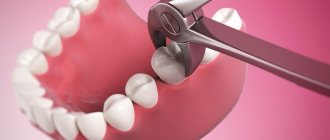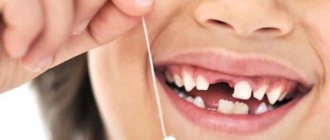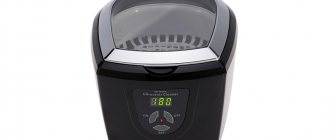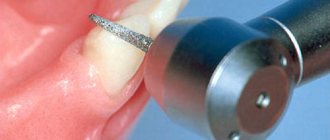Primary teeth are necessary so that, under the influence of occlusal load, a sufficient amount and volume of bone tissue is formed. Otherwise, permanent teeth simply would not be able to take root in the gums. Normally, a child's teeth are replaced in a certain order. As a result, the primary bite is replaced by a permanent one without pathologies.
Removal (extraction) of baby teeth only at first glance seems to be an absolutely simple procedure. If a baby tooth is lost long before a permanent tooth grows in its place, there is a risk of developing pathological changes in the bite. The decision to remove a child’s tooth must be made by a doctor.
What role do baby teeth play?
It was not by chance that nature provided for the replacement of temporary teeth with molars. Baby teeth help the baby switch to a regular adult diet, stimulate the development of jaw bone tissue and create favorable conditions for the teething of a permanent set. If there had not been such a change, then the molars simply would not fit on a small child’s jaw and would not be able to fully perform their immediate functions.
Treatment of permanent teeth
Treatment of caries of permanent teeth in children is carried out according to the same principle as in adults, only with the use of special photocomposites.
Stages of treatment:
- Introduction of anesthesia.
- Removal of affected tissue. Typically, pathogenic foci are eliminated using a drill, after which the cavity is thoroughly cleaned.
- Treatment of teeth with antiseptic preparations.
- Drying with air jet.
- Application of phosphate cement insulating material.
- Filling.
The initial stage of caries is treated with remineralization or, for example, ozone therapy. The silvering method is not used for permanent teeth.
Do baby teeth need to be treated?
Many people believe that if a tooth falls out anyway, then it does not need treatment. In fact, this is far from the case. Baby teeth perform very important functions. They ensure proper growth of the jaw, protect the rudiment of the permanent unit from infection by pathogenic microbes and prevent the development of malocclusion. If a baby tooth is not treated, caries penetrates deep into the tissue, which inevitably causes damage to the rudiment. In the future, this leads to various pathologies, including dental anomalies, speech disorders and much more. To avoid this, it is very important to carry out timely treatment of baby teeth at the first stage of disease development, and not to remove them.
Treat or remove?
To this question, the simplest answer that comes to mind first is to remove it, since this will help solve all the problems in one visit to the dentist’s office. However, if you dig deeper, it will be obvious that the simplest solution is not always the right one.
The consequences of premature loss of a baby tooth are quite serious:
- Earlier removal of temporary teeth leads to the fact that the remaining ones try to fill the vacated space and, in short periods of time, move towards the empty space. Because of this, molars can erupt in the wrong places and lead to severe malocclusions, which will require complex, lengthy and expensive orthodontic treatment.
- After the removal of a baby tooth, the bone tissue of the jaw ceases to experience the necessary load, which is why the rate of its growth and development decreases. Subsequently, such processes can lead to the fact that when the molars erupt, they will not have enough space, and they will grow crookedly and overlap each other.
- Long-term absence of chewing teeth and insufficient processing of food during chewing can cause the development of chronic diseases of the gastrointestinal tract.
- For a school-age child, the absence of front baby teeth can become a serious psychological problem, which will complicate relationships with peers and negatively affect the formation of personality.
It is because of these consequences that in modern pediatric dentistry, when it comes to removing or treating, if possible, preference is given to the second option.
Is it possible to prepare a child for the procedure?
If you are faced with the need to remove a tooth for your baby, try to make every effort to reduce the psychological burden to a minimum. To do this, you can come up with a fairy tale that one of the teeth needs to go on an important journey, but for this it needs to be pulled out of the mouth. Before you go to the dentist's office, tell your child that after the tooth goes on a trip, you will also go to the park, circus, or buy toys. It will be good if thoughts about this pleasant event distract the child from the upcoming procedure. It is important for parents themselves to remain calm and positive and not to panic. As a rule, this condition is transmitted to the child, who behaves calmly, which greatly facilitates the procedure.
Indications and contraindications
Even though children's teeth will fall out naturally from the primary occlusion, the reasons for removing them prematurely must be quite compelling. Indications for such manipulation are strictly limited:
- Advanced forms of caries, in which the crown is so damaged that there is no technical possibility to restore it.
- Situations when the permanent tooth has already erupted, but the milk tooth sits firmly in its place and interferes with the normal growth of the root rudiment.
- The presence of a chronic fistulous tract on the child’s gums that cannot be cured by other methods.
- Severe forms of inflammation (pulpitis or periodontitis), when there is a high risk of spread of the pathological process and death of the rudiments of permanent teeth.
- Delayed resorption of the root of a temporary tooth, which interferes with the normal eruption of the permanent crown.
It is possible to remove a loose baby tooth in situations where it causes significant discomfort to the child and interferes with normal conversation and eating.
Removal is contraindicated in the following cases:
- The presence of an acute inflammatory process in the child’s mouth: gingivitis, stomatitis, candidiasis, herpetic rashes.
- If there are signs of infectious diseases of childhood: scarlet fever, whooping cough, chicken pox, as well as tonsillitis, flu or even a common acute respiratory infection.
- If the child suffers from diseases that interfere with normal blood clotting: hemophilia, leukemia.
- If the child is in serious condition and has heart failure, heart defects, or epilepsy.
- If there is a hematoma in the area of the tooth that requires removal.
In each specific case, the dentist decides whether to remove the temporary tooth or try to treat it.
«
Features of treatment of children's teeth
Dental treatment in childhood requires compliance with a number of features. The methods are similar to those used for adults, but there are some differences. In general, pediatric dentistry is a separate “world” in which only experienced doctors who know how to approach children work. This requires a lot of experience and communication skills with young patients, since in some cases you have to try hard to calm the child down and carry out treatment in a favorable environment for him.
How to treat teeth at 1 year old
The first visit to the dentist is recommended at the age of one year. During the initial appointment, the specialist carefully examines not only the milk teeth, but also the frenulum of the lips and tongue. A visit to the doctor at this age is extremely necessary to promptly detect and then eliminate:
- bite defects;
- frenulum abnormalities;
- gum pathologies and other possible disorders.
If any diseases are discovered during the examination, the specialist prescribes treatment. If there is an assumption that manipulations may cause pain or discomfort to the child, anesthesia is used.
How to treat teeth at 2–3 years old
At the age of two to three years, for preventive purposes, the child should be taken to an appointment not only with a dentist, but also with a hygienist, since during this period most children usually erupt all their milk teeth, and they require special care. At the initial appointment, the doctor examines the oral cavity and assesses the correctness of the bite. In addition, all baby teeth are checked for cavities.
Most often, at 2–3 years of age, caries is diagnosed at the “spot” stage, when deep tissue structures have not yet been affected. In this case, two treatment methods are usually used:
- Remineralization.
The procedure is painless and performed without anesthesia. The method is based on the use of special compounds based on fluorine, calcium and phosphorus. The product is applied directly to the affected area and allows you to restore the mineral balance of the tooth.
- Silvering.
During the procedure, the teeth are coated with a special silver-based compound, which protects the enamel for a long time and prevents the re-development of caries.
Most often, using such methods, the stain is removed without instrumental intervention. If caries has affected deeper layers, it is impossible to do without removing the affected tissue, cleaning and filling.
How to treat teeth at 4–5 years old
If during diagnosis the doctor discovers caries, the most common disease at this age, treatment is prescribed according to the following algorithm:
- treatment of the oral cavity with antiseptic drugs;
- applying “freezing” agents to the gums in the area where the anesthetic was administered;
- injection administration of anesthesia;
- removal of affected tissue using special tools or a drill;
- filling.
The whole process takes about 30–40 minutes, sometimes more depending on the size and severity of the caries, and the child does not feel anything, since the procedure is carried out only after the anesthesia has taken effect.
If gum disease is diagnosed, topical agents are most often prescribed - ointments, creams, gels, as well as rinsing the mouth with pharmaceutical solutions or tinctures of medicinal herbs. In severe forms of pathologies, medications can be prescribed that eliminate inflammation and relieve painful symptoms.
How to treat teeth for children over 5 years old
At the age of 5 to 7 years, the replacement of baby teeth with permanent ones begins. During this period, particularly careful hygiene and regular visits to the dentist are required, as it is necessary to monitor the condition of the enamel, which is formed gradually over 2–4 years.
After 7 years, bite problems often arise. This is due to the fact that instead of a gradual increase in the jaw in proportion to the growth of permanent teeth, some kind of failure occurs, as a result of which anomalies appear - incomplete closure, displacement of the dentition, malocclusion, etc. In such cases, the therapeutic course includes not only wearing braces and other orthopedic structures, but also visiting a speech therapist.
Removal Features
Baby teeth in children have a number of anatomical features that the doctor must take into account when removing them:
- The wall thickness of the alveoli is much thinner.
- Often milk roots diverge deeper at a fairly large angle.
- The cervical area is very weakly expressed.
In addition, special tools are used for extraction - forceps with weak fixation, due to which the likelihood of damaging thin tooth walls is extremely low. The removal technique is to fix the tooth as tightly as possible and remove it in one movement, so as not to cause additional discomfort to the baby.
Contraindications for removal - when the doctor refuses to admit
- diseases of the central nervous system;
- exacerbation of chronic diseases;
- heat;
- viral and infectious diseases – whooping cough, ARVI, influenza, mononucleosis;
- inflammatory processes in the oral cavity;
- neoplasm near the root.
Anesthesia
When a child needs to have a tooth removed, the question of anesthesia always arises. In most cases, when a loose tooth whose root has almost completely resolved is to be extracted, no special anesthesia is required. A friendly attitude from the doctor and a positive attitude from the parents are enough.
If a more complex procedure of tooth extraction or nerve removal is required, then the best option for pain relief is local anesthesia in a dosage calculated for each child individually. The latest generation of drugs are used for this, which rarely cause allergic reactions and eliminate pain as much as possible. But, despite all the advantages of such drugs, a mandatory step before pain relief is to conduct a test for a possible allergic reaction. Only in the case of a negative test can the drug be considered safe.
In exceptional cases, when the child’s reaction to a visit to the dentist’s office is extremely negative or there is a need to treat a child under one and a half years of age who is not yet fully accessible to contact, then removal under anesthesia is possible. For this purpose, drugs administered intravenously are used. This procedure is available only in large dental centers that have a pediatric anesthesiologist on staff and have received a special license to perform it.
What should parents do after tooth extraction?
Before removing a tooth from a child, the dentist has a conversation with the parents, in which he talks about the recommendations that should be followed after the procedure in order to avoid complications and speed up the healing process of the hole.
- The child should not be allowed to drink or eat for two hours after surgery.
- For two to three days after removal, the baby should be allowed to rinse his mouth with antiseptic solutions after each meal and before bed.
- You need to make sure that the child does not try to pick at the wound with sharp objects or simply touch the hole with his hands.
- During the healing period, it is better to avoid salty, spicy and too hot foods, which will irritate the damaged mucous membrane.
- If you experience bleeding from the socket or other symptoms indicating the development of inflammation at the site of the extracted tooth, you should immediately consult a doctor.











